Dr. Ir. Ian Josef Matheus Edward, M.T
STEI-ITB
Dr. Hamonangan Situmorang, S.T., M.T.
STEI-ITB
Abstract
This study examines methodologies for calculating Service Level Agreements (SLA) for internet services in rural regions of Indonesia, where infrastructure limitations and connectivity issues pose significant challenges. The paper proposes alternative methods for SLA calculations, focusing on uptime data from Network Management Systems (NMS), Ping delay, and Uninterruptible Power Supply (UPS) systems. By utilizing NMS data from both NMS A and NMS B, the system classifies downtime into restitution or non-restitution based on a threshold of 300 seconds. Additionally, Ping delays exceeding 300 seconds are considered restitution, while those below 300 seconds are classified as non-restitution. UPS system data is used to enhance classification accuracy by identifying link status based on Ping and UPS downtime conditions. These alternative SLA calculation methods aim to improve network performance monitoring, ensuring reliable service delivery and facilitating better infrastructure management in rural areas. The approach can serve as a practical solution to ensure consistent service levels despite the challenges of remote location connectivity.
Keyword: Rural Area, SLA, Uptime , Ping, UPS.
Introduction
Indonesia, as an archipelagic country, faces considerable challenges in ensuring equitable internet access, especially in remote and disadvantaged regions. To address this, the government has partnered with private ISPs to provide free internet services. As part of this initiative, NMS A, acting as the bill payer and facilitator, collaborates with NMS B, the ISP, to expand access in 3T regions (Frontier, Remote, and Disadvantaged). A key component of this collaboration is a Service Level Agreement (SLA) that defines critical metrics such as network uptime, minimum internet speed, and response time, along with compensation mechanisms for unmet standards. Ensuring compliance with the SLA is essential to maintain service reliability and support government efforts in expanding telecommunications infrastructure across Indonesia.
SLA calculation plays a vital role in verifying that the charges imposed on NMS A align with the services provided by NMS B. Two alternative methods are proposed: restitution and non- restitution. In the non-restitution model, no financial compensation is provided for service failures, but NMS B is required to rectify issues swiftly, emphasizing quick recovery. In contrast, the restitution model compensates NMS A if the SLA is breached, such as offering bill reductions or free service time when uptime falls below the agreed threshold. These approaches ensure accountability, incentivizing NMS B to maintain service quality while protecting NMS A’s interests in ensuring continuous and reliable internet access.
Proposed Model
In an effort to bridge the digital divide in remote and underserved regions, Indonesia has implemented a satellite-based internet infrastructure system. This system is a collaboration between NMS Server A, which acts as the financial facilitator, and NMS Server B, the Internet Service Provider (ISP) responsible for ensuring internet service delivery. By utilizing satellite technology, this framework enables access to the internet in areas classified as rural areas, where conventional terrestrial network deployment is either impractical or too costly. See the illustration in Picture 1. Network Infrastructure System for a visual representation of this system.
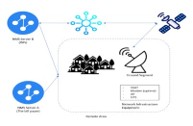
This calculation uses simulation data sourced from NMS A and NMS B. NMS A, designated by the government as the bill payer, serves as the facilitator and provider of telecommunications infrastructure. It collaborates with the ISP, NMS B, to enhance internet access in 3T regions (remote, underdeveloped, and border areas). The simulation data is designed to reflect real conditions in rural areas, incorporating uptime, ping, and UPS data. This study introduces a novel approach to calculating the service level of internet access in these regions. Key contributions include a method for identifying failure causes, defining time tolerances, and a comprehensive framework for accurately determining the service level.
In terms of priority, data hierarchy can be categorized based on type and source. Based on data type, it is divided into uptime data (Priority I) and PING/UPS data (Priority II). Meanwhile, based on data source, it is categorized as data originating from PRTG on NMS Server A (Priority I) and data from PRTG on NMS Server B (Priority II).
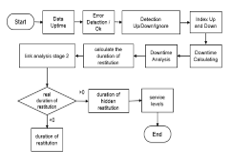
Discussion and Result
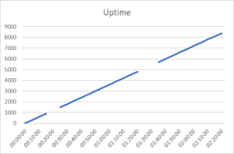
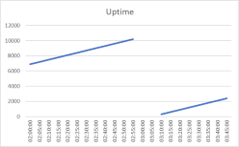
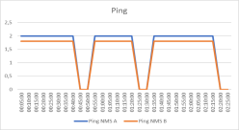

Conclusion
This paper explores alternative methods for calculating Service Level Agreements (SLA) in rural Indonesia, where infrastructure challenges make uptime monitoring difficult. The methods leverage data from Network Management Systems (NMS) A and B, Ping delays, and UPS data. Downtime exceeding 300 seconds is classified as restitution, while shorter downtimes fall under non-restitution. Correlating data from NMS A and B ensures consistent service evaluation even when one source is unavailable. Additionally, Ping delays and UPS data offer a reliable way to assess network performance. These methods enhance SLA accuracy and provide valuable insights into service continuity, crucial for improving internet access in underserved regions.